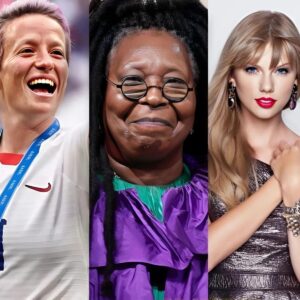In women’s college basketball, Paige Bueckers has established herself as one of the most electrifying and talented players in the game. As a redshirt senior for UConn, Bueckers is returning for her fifth year and is widely regarded as the best player in the college basketball scene. Her return, however, has sparked debate, as she’s now 23 years old and dominating a league where many of her competitors are fresh out of high school.

Bueckers’ decision to return has drawn criticism from some who argue it’s “unfair” for a seasoned player of her caliber to continue at the college level. At 23, she’s competing against younger athletes, and some fans and analysts believe that her presence in college, given her advanced skills, tips the scales too heavily in favor of UConn. “She’s cooking 18-year-olds as a 23-year-old,” one commentator noted. “But the reality is, that’s part of the new basketball landscape.” Yet, Bueckers’ impact goes beyond her age; her freshman year performance alone showed she was ready for the next level, leading many to wonder why she hasn’t yet entered the WNBA.
The answer lies in the unique incentives of the college game, where the rise of Name, Image, and Likeness (NIL) deals has changed the landscape. As the face of college women’s basketball, Bueckers has NIL earnings that might even rival her potential WNBA salary, making her financially secure while she continues to chase a National Championship with UConn. In fact, reports suggest that she could earn as much—or even more—in college than she would as a rookie in the WNBA.
But it’s not all about the money. Bueckers has also had a personal journey with injury recovery, including a major ACL tear that sidelined her for a year. For her, returning for a fifth year is not just about padding her stats or prolonging her college career but ensuring she has the best chance to end on a high note. Additionally, staying in college another year allows her to avoid the challenging rookie season that would place her immediately up against WNBA talents like Caitlin Clark. Some say she’s waiting until she can enter the WNBA at her absolute peak, avoiding a sophomore slump right after an intense college comeback.
As for the age debate, Bueckers is far from the only player using her fifth year; many seniors across college basketball are 22, 23, or even older, as extended eligibility due to injuries or pandemic-related disruptions has become increasingly common. In this respect, her age is more a reflection of today’s college game than an outlier case. In fact, Bueckers’ decision highlights a larger conversation about the NCAA’s rules: should top college players be allowed to leave for the WNBA sooner, as they can in men’s basketball?
Looking at her performance, it’s clear she’s held to the highest standards. Her talent is indisputable, and this season is widely regarded as “the year of Paige.” Fans expect Bueckers to live up to her immense potential and reclaim her title as National Player of the Year. And with her coach openly ranking her as equal to, or even better than, stars like Caitlin Clark, the pressure is intense.
However, Bueckers’ fifth year does give fans more time to see her dominate the court at a time when women’s college basketball is enjoying a surge in popularity. Her choice also allows her to continue building a legacy in college sports—a level where she has been nothing short of a phenomenon. She has inspired a generation of young athletes and played a significant role in raising the profile of women’s college basketball.
The debate over her age and decision to stay will likely continue, but as the season unfolds, Bueckers is expected to give it everything she’s got for UConn. For now, she’s choosing college stardom over the WNBA, potentially making more from NIL deals and focusing on winning another national title for the Huskies. And while some fans may question her motivations, others are simply thrilled to watch a player of her caliber continue making history at UConn.
4o





